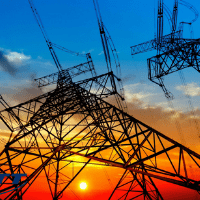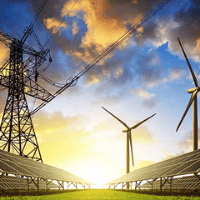Electricity Supply Industry
Electricity Supply Industry?
The Electricity Supply Industry (ESI) is among the most powerful economic sectors in Germany, and constitutes an economic and political power cartel which has been able to resist all attempts at altering the framework conditions for German energy policy in recent decades.
The legal and institutional framework has cemented this structure and secured the privileges of the large utilities as well as the small local monopolies, the ‘Stadtwerke’. In the last decade, issues such as deregulation, energy or CO2 taxes, privatisation of public utilities, and the realisation of a single European market for energy have also affected Germany, bringing with them major changes and new risks for the electricity business.
The powerful ownership links between the ESI and major financial and industrial interests in Germany indicate that this industry is an integral part of what has been termed German Alliance Capitalism (Shonfield, 1968, 1971). In contrast to competitive capitalism, alliance capitalism is characterised by close ties and collaborative relationships between commercial entities, and the success of industries within this system relies on the concerted orchestration of large resources in pursuit of common goals.
With its huge turnover and vast profits, protected by its monopoly, the ESI grew into the major cash cow of the German economy. The political status of this economic system was consolidated by links to state bodies at all levels and, through revenue-sharing, with German municipalities by way of generous concession fees.
Electricity Supply

Production of electricity

Transmission of electricity

Distribution of electricity

Trade of electricity
Role of Shamkris
A Project Report is a document that provides details on the overall picture of the proposed business. The project report gives an account of the project proposal to ascertain the prospects of the proposed plan/activity.
Shamkris will provide a Project report covering Industry License requirements, competitor analysis, Land requirements, machinery requirements, equipment requirements, and financial requirements.
Some of the areas covered in the project report are outlined below:
- Introduction
- Project Description
- Uses and Applications
- Market Survey
- Raw Materials
- Manufacturing Process
- Process Description
- Process Flow Diagram
- Plant Layout
- Details of Plant & Machinery
- Suppliers of Raw Materials
- Suppliers of Plant & Machinery
- Plant Location Factors
- Land & building Required
- Power and Water Required
- Details of Manpower Required
- Financials of the Project
- License and application Certificate
Financials of the Project includes:
- Land and Building Costs
- Plant and Machinery Costs
- Other Fixed Assets
- Fixed Capital Investment
- Raw Material Costs
- Salaries and Wages
- Total Working Capital
- Cost of Project
- Total Capital Investment
- Cost of Production
- Turnover per Annum
- Profitability Analysis
- 5-year Profit Analysis
- Break-even Point
- Resources of Finance
- Cash Flow Statement
- Projected Balance Sheet
FAQ
- Natural gas was the largest source—about 40%—of U.S. electricity generation in 2020. …
- Coal was the third-largest energy source for U.S. electricity generation in 2020—about 19%.
